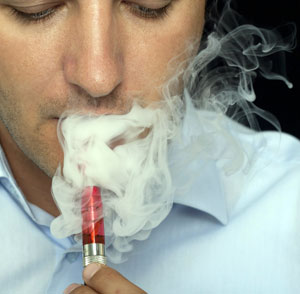Electronic cigarettes have been taking a hit lately, with many wondering what is happening in the segment. Some ar e even questioning whether it is still a viable segment to be in — particularly considering the uncertainty surrounding the Food and Drug Administration’s (FDA) proposed deeming regulations, according to a story in Convenience Store News (CSN).
e even questioning whether it is still a viable segment to be in — particularly considering the uncertainty surrounding the Food and Drug Administration’s (FDA) proposed deeming regulations, according to a story in Convenience Store News (CSN).
What is known is this: In the grand scheme of things, e-cigarettes are still pretty new, and the segment continues to grow and evolve. Industry insiders still see plenty of opportunity — for both retailers and manufacturers.
Speaking during a CSN webcast entitled “E-Cigs: The Category of Evolution,” Miguel Martin, president of webcast sponsor Logic Technology Development Corp., pointed out it is important to understand that the consumer for electronic cigarettes is the adult smoker.
“The reality is, cigarettes have had a tremendous year, but regardless of the success of cigarettes, almost half of adult smokers are looking for an alternative,” said Martin, whose company is the maker of Logic Premium Electronic Cigarettes. “And whether that’s been snus or different items in the past, electronic cigarettes do appear to meet many of the core needs that adult smokers have.”
These core needs go beyond just nicotine to include societal cues, social cues and the hand-to-mouth experience. These attributes that attract adult smokers to electronic cigarettes are just as true today as they were in the past, he explained.
However, Martin acknowledged that it is not lost on Logic, nor anyone else in the industry, that e-cigarettes have slowed in sales.
“To be frank, that is true. That being said, it is a still a very large segment and companies like Logic that are focused primarily on brick-and-mortar see a very bright future,” he maintained.
“While electronic cigarettes may not be growing as they once were, they are still a very important category for retailers and wholesalers, and very importantly allow the trade to have much higher margins than traditional combustible products,” Martin said. The segment also has the potential to allow retailers and wholesalers the flexibility to customize their offerings, he noted.
While there is no syndicated data available on vape shops and online sales, Logic is aware these outlets exist and are an important part of the overall electronic cigarette business.
When you look at the market share of the e-cigarette segment, Martin explained the consumer is still figuring things out, so the brands are moving around very quickly.









